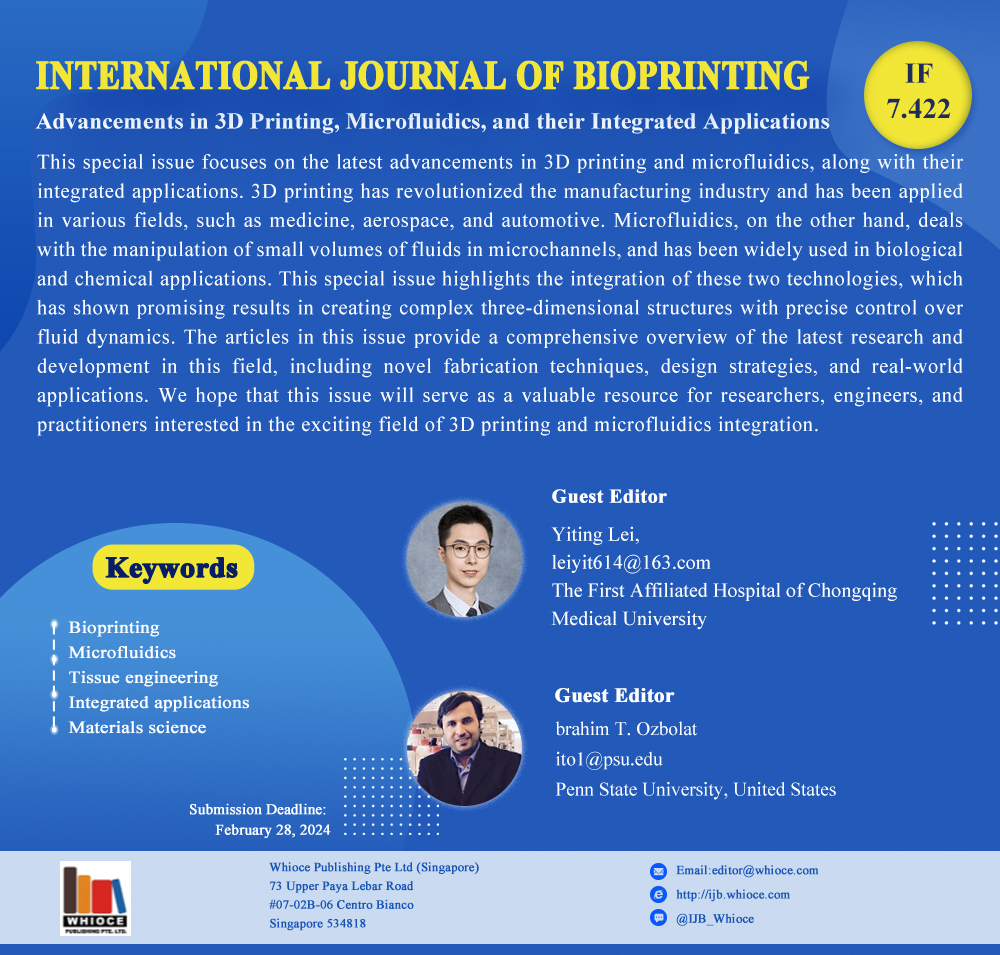
Dear Colleagues:
This special issue focuses on the latest advancements in 3D printing and microfluidics, along with their integrated applications. 3D printing has revolutionized the manufacturing industry and has been applied in various fields, such as medicine, aerospace, and automotive. Microfluidics, on the other hand, deals with the manipulation of small volumes of fluids in microchannels, and has been widely used in biological and chemical applications. This special issue highlights the integration of these two technologies, which has shown promising results in creating complex three-dimensional structures with precise control over fluid dynamics. The articles in this issue provide a comprehensive overview of the latest research and development in this field, including novel fabrication techniques, design strategies, and real-world applications. We hope that this issue will serve as a valuable resource for researchers, engineers, and practitioners interested in the exciting field of 3D printing and microfluidics integration.
Microfluidic fiber spinning for 3D bioprinting: Harnessing microchannels to build macrotissues
Preparation of tunable hollow composite microfibers assisted by microfluidic spinning and its application in the construction of in vitro neural models
Biomimetic mineralization of 3D-printed polyhydroxyalkanoate-based microbial scaffolds for bone tissue engineering
Three-dimensional-printed scaffolds functionalized with stem cell recruitment and cell respiration regulation for diabetic bone defects
Emerging frontiers in 3D bioprinting: Harnessing decellularized matrix bioink for advancements in musculoskeletal tissue engineering



